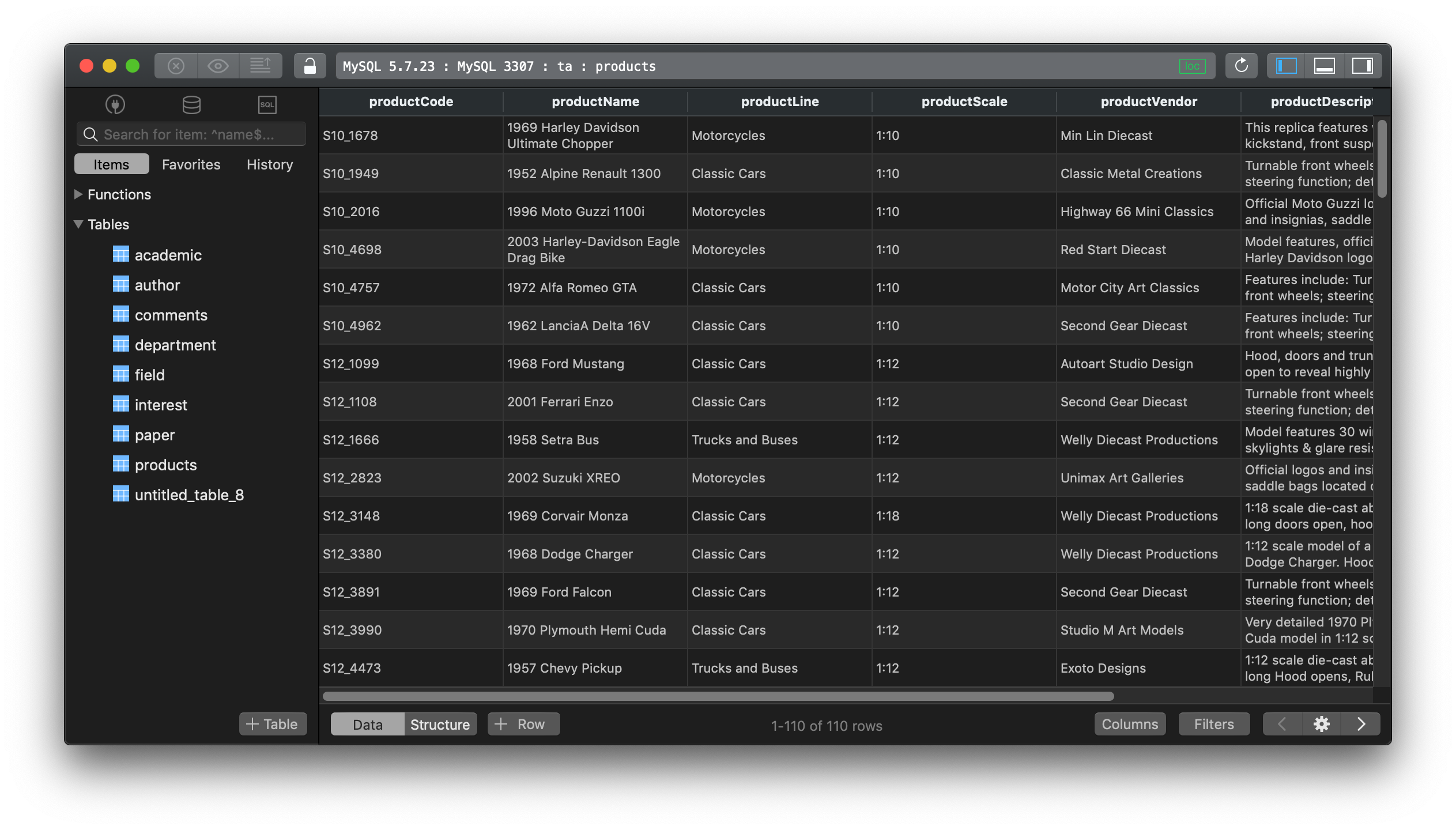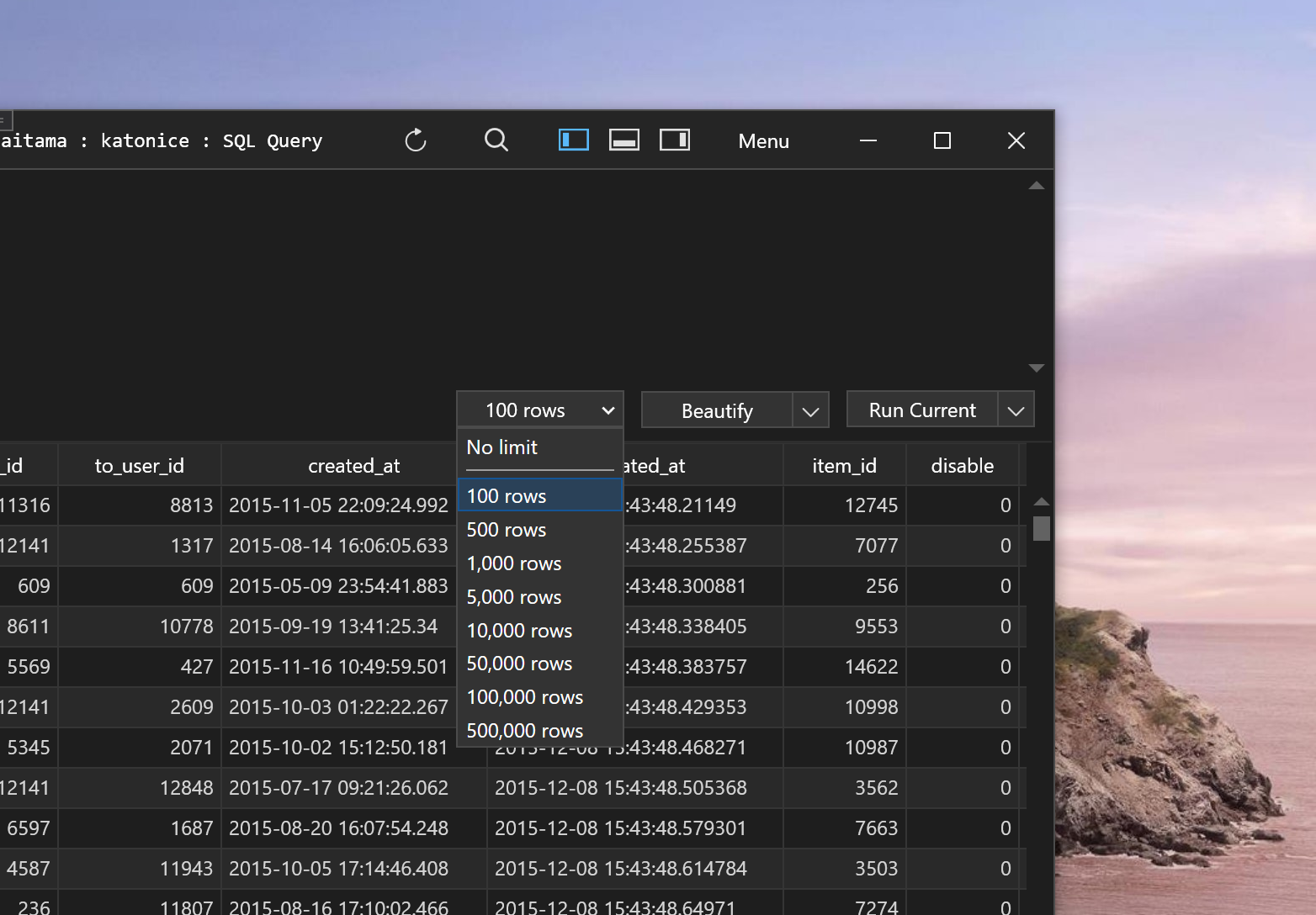
- #Tableplus redis how to
- #Tableplus redis software
- #Tableplus redis code
- #Tableplus redis password
- #Tableplus redis windows
There are many times that I make changes by mistake and some are irreversible.
#Tableplus redis password
asking for password to commit the changes. The fact that before I apply changes (which are highlighted too) I need to commit them makes me feel more secure.
#Tableplus redis code
I like the fact that I can preview the SQL before I execute it, because some times I need to edit the code or copy it for multiple use. The connection manager is the best of all features because I can group and color my connections based on the relevance and the use, for example group by customer, by server, by production or debugging etc. It's easier, faster and more secure than using phpmyadmin or any other software. Managing and maintaining multiple production and local databases without having to worry about passwords or database details using a single and cross-platform database management software. User-friendly and intuitive interfaceSupports multiple database types including SQL, NoSQL, and Cloud databasesOffers advanced features such as query building and SQL scripting CONSĬan be resource-intensive and slow on older computersAdvanced features can be overwhelming for beginner usersSome features may not be available for all database types In conclusion, TablePlus is a great choice for those looking for an intuitive and feature-packed database management too PROS The tool also offers advanced features such as query building and SQL scripting.However, it can be resource-intensive and slow on older computers, and the advanced features may be overwhelming for beginner users.Some features may also not be available for all database types. TablePlus is a powerful database management tool that offers a range of features for both beginner and advanced users.Its user-friendly interface and support for multiple database types including SQL, NoSQL, and Cloud databases make it a versatile tool for managing your databases.

#Tableplus redis software
they have only one person to contact for support,, and he just doesn't have an answer for things that are very reasonably considered to be basic features in other sql clients (like why it works for me to *near instantly* kill queries with literally any other software (data grip, postico, etc) that I've downloaded) - they thought it was best not to include the file name in the ribbon of an open file, making it hard to edit multiple things at once - you can't create a new scratch within the same workspace without first opening up the left window pane to reveal the button to do so - other bs that makes it very easy to overlook the visual appeal of this gui during times when I somehow do have the option to kill a query, it will take many minutes to 'load' the query before you have the option of killing it.

that is, even when my cpu is running fine and has more than plenty of memory, and other applications have no problems at all - regardless of database, I rarely have the ability to kill a query.
#Tableplus redis windows
When interacting with non-local databases: - all windows will randomly close. very aesthetically pleasing - query history is helpful - works well with local databases CONS Hopefully they figure it out, because they're on the right track visually, but I don't understand how other reviewers can reasonably give this software three stars given its limitations PROS However, when it came time to do actual work, this software is undoubtedly a pretender and not a contender. I thought I had found my new sql editor and I was thrilled because this interface looks fantastic. At first I tested Tableplus on a local database and everything was awesome. Let's set up with Redis Labs as it's a super quick set up.I only used this app in the first place because I hate how cluttered and ugly other apps, like data grip, are. There are plenty of options to choose from when it comes to deploying your Redis server.įor example, Heroku and Redis Labs offer freemium plans. If you now make sure you have an env file at the root of your project with the Redis config values in it and spin up your local NestJS app and Redis server, it will still work as expected, but now you can use the environment variables to configure your Redis configs.

#Tableplus redis how to
That's a little beyond the scope of this tutorial (you'd be using async configuration), but I'll be publishing a more in-depth tutorial on how to do this in the future.

However, it's best practice to import them from a custom config file and use the NestJS config module.


 0 kommentar(er)
0 kommentar(er)
